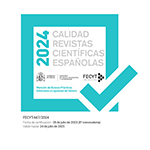Socio-economic inequality and differential access to digital technologies for girls and boys in Argentina
Abstract
Socio-economic inequality in Argentina between children and families, as in most countries, is a structural fact that has been measured since measurable data has been available. This inequality is expressed both through monetary poverty, which in Argentina currently exceeds 60% of the population under 18, and in non-monetary deprivations that affect more than half the country’s children. The pandemic and the confinement measures imposed by the national government included closing schools, as did other countries, which reinforced a dependence on connectivity in order to give continuity to the educational process. Given that access to connectivity and its effective use are strongly related to the socioeconomic group to which children and adolescents belong, it was to be expected that confinement measures would affect economically disadvantaged children more than others. The available data show that this, in fact, is what occurred. However, it also showed an overall increase in access to and use of digital technology that was even more intense in social groups with lower incomes and greater rights deprivations. This article aims to document and analyze this process with longitudinal data covering the period 2016-2020, with special emphasis on the latter years.
Downloads
Article download
License
In order to support the global exchange of knowledge, the journal Sociedad e Infancias is allowing unrestricted access to its content as from its publication in this electronic edition, and as such it is an open-access journal. The originals published in this journal are the property of the Complutense University of Madrid and any reproduction thereof in full or in part must cite the source. All content is distributed under a Creative Commons Attribution 4.0 use and distribution licence (CC BY 4.0). This circumstance must be expressly stated in these terms where necessary. You can view the summary and the complete legal text of the licence.










